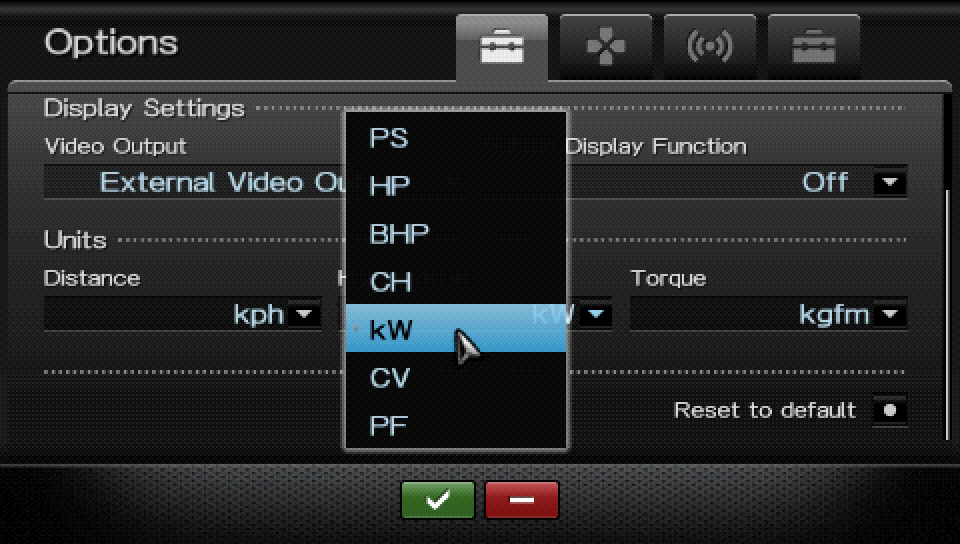The vast majority of cell phones use a single-cell Li-Ion battery, so their capacities can be directly compared using mAh. Laptops almost always contain multi-cell Li-Ion batteries, so their capacity cannot be directly compared using mAh (e.g. a 4S battery rated for 2500mAh has more energy than a 3S battery rated for 3000mAh).
So why don’t we use Wh for phones too? Simply because manufacturers would rather advertise a battery size of five thousand mAh (wow, so much capacity!) instead of 19 Wh.
The same issue happens with portable USB battery packs - they’re all advertised in mAh even though they use a wide variety of chemistries and cell configurations internally. What manufacturers do is take the total Wh of the pack and convert it back to the equivalent mAh of a single-cell Li-Ion. It’s annoying, and I really wish they would just use Wh directly.
But why not advertise in mWh? 19000 is bigger than 5000
I don’t think they know about metric prefixes, Pip.
Imagine if the marketing people discovered that they could advertise that it has 19 million uWh (in Doctor Evil voice). Don’t say it too loudly though, someone at Apple might hear.
That would be ideal, but I think at this point there’s just too much marketing momentum using mAh, and switching to mWh would be too confusing to consumers. But yeah, I agree, mWh is definitely the most appropriate unit to use.
five thousand mAh
Isn’t that just 5 Ah though
Yeah, but it’s 5 billion nAh.
And 19000 mWh. I’d rather have 19000 of something rather than 5000. I feel cheated and no amount of telling me it’s exactly the same will change my mind.
Yeah but then you don’t get to say thousand
deleted by creator
mAh is a bigger number than Wh and looks better on packages.
Wait until you hear about µAh. This is the one secret the engineering team doesn’t want the marketing department to know.
Lets use coulomb hours or electron-per-second-hours.
LOL, electrons per second hour is such a cursed unit, it’s going to take some effort to make it worse.
Why are we are waiting for the second hour? Why the hell don’t they make something with electrics per first hour?
And mWh is even bigger.
You wanna talk about inflating numbers?

Laptops predate cell phones in mainstream use. When laptops started, there were a variety of battery types in use with no standard charging voltage so Wh was the fair way to compare.
Cell phones have pretty much always been 3.7v lithium so mAh is a fair comparison and gives a bigger number than Wh.
You could just put it in mWh. BAM, bigger number.
3000 mAh * 3.7V = 11.100 mWh Much bigger. Much better.
I hate mAh… it’s absolutely no information how much energy is inside without taking the voltage into account. If you use directly (m)Wh, you directly have the amount of energy the battery can contain.
The thing is, batteries are measured in Ah, and not Wh. That’s because their voltage changes all the time, and is mostly the same for the same kind of chemistry, and also because for most of their uses, the current is the actually useful information.
Phones are just using the standard metric. It’s laptops that are weird.
More like 4-4.4v when fully charged. They should actually list the voltage as well as it affects longetivity
Eidt: voltage
Wh is a unit of energy, Ah is a unit of electric charge, basically how many physical electrons passed by.
The voltage of a battery goes down gradually as it is discharged, so getting an accurate value for total energy dissipated is very complicated, as this varies greatly with the discharge profile and other physical factors like the age/health of the battery.
The one thing that stays constant is the amount of electric charge a battery can provide. If it’s old, the voltage of that charge will be lower and go down quicker, but it will be the same total charge.
I agree from a consumer point of view, joules would be a friendlier unit, however it is also a lot easier to game. Electric charge is a much more definite unit in an electrical engineering sense.
If any of what I said is confusing please ask me to clarify, I’m assuming a basic level of electronic literacy but it’s hard to know what knowledge I’m taking for granted as an ex electrical engineer.
it’s hard to know what knowledge I’m taking for granted as an ex electrical engineer.
I can’t imagine it’s hard to establish a standard environment for battery capacity testing, or that such a standard doesn’t exist already. Charge might be the more definite unit but it is not the useful unit. I think the closer they get to actually measuring the battery performance the better
Why 5000 mAh rather than just 5 Ah?
Batteries often have a rating like 3250mAh, which is arguably clearer than 3.25Ah, especially on a datasheet.
My laptop shows the battery capacity as 8790 mAh.
Aren’t most notebooks measured in gsm?
Can I add a follow up question: Why don’t normal batteries have any useful measurements on them, at least in the UK anyway, not sure about elsewhere. Rechargeable batteries will have an Ah rating but normal AA or AAA etc will just say “Ultimate” or “Advance” etc, like why can’t we just have an Ah or Wh or even just a standardised rating based on a fixed current discharge or something? It’s infuriating that in 2023 I’m buying something with know way of quantifying its content other than the inference of the product name.
The reason phone vendors can advertise capacity is because the load (the phone) is a known quantity. They made the phone, so they can reliably estimate the battery’s capacity based on average use by that phone.
Similarly, power bank manufacturers can do the same, because the load is controlled by them. The USB port might only provide 5V at 1.5A or 3A - whatever the power bank manufacturer put in - so they can reliably estimate how much current over time the battery can provide.
But makers of alkaline batteries don’t have that knowledge. They have no way of knowing if you’re going to put them into a kid’s toy that pulls only 20mA, or a DC motor for a rotisserie that pulls 1A. So they can’t possibly provide you any measure of Ah that is going to satisfy all consumers. If they did, they’d open themselves up to legal problems for making misleading claims about their product.
Hence Watt-hours
That’s a good question, I’ve actually been wondering the opposite.
Generally Li-ion (3.7V nominal) batteries were used so they could just base it off of current usage rather than power usage and you could get a decent idea comparing between smart phones.
Laptop batteries tend to use an operating voltage of multiple times that (2-cells would use 7.4V-ish, 3-cell would be 10.8 to 11.4V nominal, 4-cell would be 14.8V and so on), but the number of cells can vary wildly per model, so Wh is easier to compare numbers between laptops.
EE Here, I like this answer.
My guess is that phone batteries always work at a fixed voltage, contrary to laptops that dynamically adjust the given to certain components (like the CPU).
Thus, it makes more sense for phone batteries to be measured in the rule of how many amperes per hour can they withstand instead of Watts per hour.
It is neither amperes per hour nor watts per hour. Those imply division (1 watt, over two hours, would be 1/2 a watt per hour. Useless as a unit for most of us). Ah and Wh are amps or watts multiplied by hours, pronounced as amp-hours or watt-hours (1 watt, for 2 hours, would be 2 watt-hours)
The voltage of your battery decreases as it is used, like pretty much any other battery. Why are you guessing?










